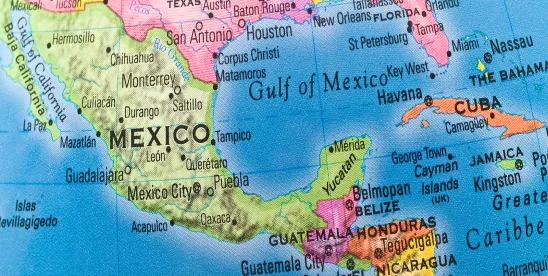On May 6, 2024, Mexico’s Energy Regulation Commission (CRE) published on the National Commission for Regulatory Improvement (CONAMER) website the preliminary draft of the agreement issuing the General Administrative Provisions for the Integration of Electric Energy Storage Systems into the National Electric System (DACG). Please see our May 2024 GT Alert for more information.
On Sept. 30, 2024, the CRE’s governing body held an extraordinary session and approved the agreement issuing the DACG. The DACG will not take effect until they are published in the Official Gazette of the Federation.
General objective
The DACG aim to establish the modalities and general conditions under which the integration of Electric Energy Storage Systems (SAE) into the National Electric System (SEN) will be carried out, in an orderly and economically viable manner.
Specific objectives
The DACG have three specific objectives: (i) establish the general conditions applicable to the SAE and define the modalities for SAE’s integration into the SEN; (ii) establish the general requirements to be met by interested parties for SAE’s integration and participation in any of its modalities; and (iii) establish the interconnection/connection procedure to be observed by those interested in integrating the SAE.
Scope
The DACG are mandatory throughout Mexico. Generators, exempt generators, suppliers, transporters, distributors, entities responsible for load, and end users will be subject to the provisions as applicable.
Integration of SAE and its modalities
The SAE’s integration into the SEN will be carried out in one of the following modalities, in accordance with the general requirements for each of them: (i) SAE-CE; (ii) SAE-CC; (iii) SAE-AA; and (iv) non-associated SAE, excluding the SAE-GE modality, whose integration will comply with Resolution RES7142/2017.1
Below is a description of each modality:
| (i) | SAE-CE: Electrical energy storage system associated with an intermittent power plant (i.e., a power plant that generates electricity from variable energy sources, such as wind or solar, that are not consistently available). Modality in which an SAE is integrated into an intermittent power plant, existing or new, so that the two share the same interconnection point. Its characteristics and modes of operation must be limited to those described in the DACG. |
| (ii) | SAE-CC: Electrical energy storage system associated with a load center. Modality in which the SAE is integrated into an existing or new load center, without including a power plant, and the two share the same connection point without injecting electrical energy into the SEN. In this modality, the SAE-CC set has the option to receive the energy supply for its SAE and load center through a supplier or to participate in the Wholesale Electricity Market (MEM). |
| (iii) | SAE-AA: Electric energy storage system associated with an isolated supply scheme. Modality in which the SAE is incorporated into a power plant whose generation goes to the isolated supply for either the satisfaction of its own needs or the import or export of electric energy in isolated supply mode. |
| (iv) | Non-Associated SAE: Battery-based electrical energy storage system that will not be integrated into a power plant or load center. Its injection and/or consumption goes directly to the National Transmission Grid (RNT) or the General Distribution Grid (RGD). |
The integration of the SAE into intermittent power plants with a valid permit will be considered a technical modification, meaning that for interconnection purposes, the request for the corresponding studies must be submitted to the National Energy Control Center (CENACE), and the permit modification request must be sent to the CRE.
Power plants eligible to receive Clean Energy Certificates (CELs) that are associated with an SAE will not be able to receive additional CELs for the stored electricity. They must demonstrate to the CRE the electricity produced from clean energy, not including stored energy.
Likewise, while the adjustments specified in the transitory section are made, the SAE will be able to offer its products and services under CENACE’s current conditions.
Connection and interconnection
Before implementing the SAE modalities, interconnection and/or connection studies will need to be conducted.
The SAE, in any of its modalities, must be installed considering the same point of interconnection or existing connection.
The interconnection request for the SAE-CE, SAE-AA, and non-associated SAE modalities must be made according to the provisions of the Manual for the Interconnection of Power Plants and Connection of Load Centers (MIC)2, or the guideline that modifies or replaces the MIC.
For the SAE-CC modalities that participate in the market and non-associated SAE, as well as for the SAE-CE that intends to be loaded from the RNT or the RDG, connection studies must be conducted in accordance with the MIC provisions, or the guideline that modifies or replaces the MIC.
CENACE, based on the interconnection and/or connection studies, as applicable, will determine the specific characteristics of the required infrastructure.
In the case of SAE-GEs, the SAE must follow the requirements set out in the general administrative provisions; the contract models; the methodology for the calculation of consideration; and the general technical specifications applicable to distributed generation power plants and distributed clean generation power plants, issued through Resolution RES7142/2017, or the instrument on exempt generation issued for such purpose; as well as the provisions of the Interconnection Manual for Generation Plants with a Capacity of less than 0.5 mw3.
Related services
An SAE, in its different modalities, may offer the related services established in the current regulation as long as it complies with the market rules. The MEM includes the following services:
- Secondary regulation reserves
- Rolling reserves
- Operating reserves
- Supplementary reserves
The MEM does not include these related services:
- Emergency start-up service
- Island operation service
- Voltage support service (reactive power and reserve)
This gives companies the opportunity to offer related services in addition to their main business activities.
CENACE must propose adjustments to the market rules that detail the technical requirements, assignment, dispatch, and settlement of the SAE that wish to provide the related services included in the MEM. Until this happens, an SAE’s participation in the short-term energy market will be limited to the delivery or withdrawal of energy, and the delivery of power in the power balance market.
Permits
The SAE-CE, SAE-AA, and non-associated SAE modalities will have the regulatory treatment of a power plant. Consequently, the CRE must issue or modify a generation permit for their operation and implementation.4
The permittee will be entitled to all rights and obligations established in the generation permits and import and export authorizations, as would any other power plant.
Supervision and surveillance
The CRE may request regulated entities to submit information pursuant to Article 12, Section XLVII of the Electricity Industry Law (LIE).5
Sanctions
Violations of the DACG will be sanctioned according to the LIE and its regulations, without prejudice to the sanctions derived from other applicable regulatory instruments or criminal or civil liability. The LIE provides for the following penalties: (i) a fine of 2-10% of the gross income received in the preceding year; (ii) a fine of up to $50,000-200,000 minimum wages; (iii) a fine of up to $100 minimum wages per megawatt-hour of consumption in the preceding 12 months; and (iv) a fine of up to three times the amount of electricity consumed as of the date when the infraction was committed; among others.
Transitory6
The DACG include a series of transitory articles detailing several actions to be carried out by the CRE and CENACE, including the following:
| (i) | Within a maximum term of 270 calendar days, the CRE will issue the corresponding regulated tariff for the related services not included in the MEM, so they can be recognized and settled. |
| (ii) | Within a maximum term of 270 calendar days, CENACE will determine the mechanisms for the operation and use of the SAE if loading and unloading from the RNT or RGD is required to guarantee the power planning reserve. |
| (iii) | Within a maximum term of one year, CENACE will make adjustments to the MEM’s mechanisms and systems to incorporate the SAE’s offers and will establish the mechanism for the application of related services. |
| (iv) | CENACE will follow up on the provisions of the Energy Transition Law to incorporate the provisions related to the SAE in the Smart Grids Program once the DACG take effect. |
Conclusion
As stated above, the DACG aim to integrate SAE into the SEN. To this end, the DACG specify the different modalities under which the integration may be carried out, the general conditions for the integration, the specific conditions applicable to each of the modalities, the connection and interconnection procedures, and the general conditions for obtaining generation permits in various cases. Likewise, the DACG provide for the possibility for SAE to offer related services.
The DACG’s implementation will prevent the administration from refusing to grant permits to variable energy projects and it will allow SAE to offer related services.
However, the DACG are subject to publication in the DOF, as well as to the implementation of the transitory articles.
Read in Spanish Here
Paula Maria De Uriarte contributed to this article




 />i
/>i

